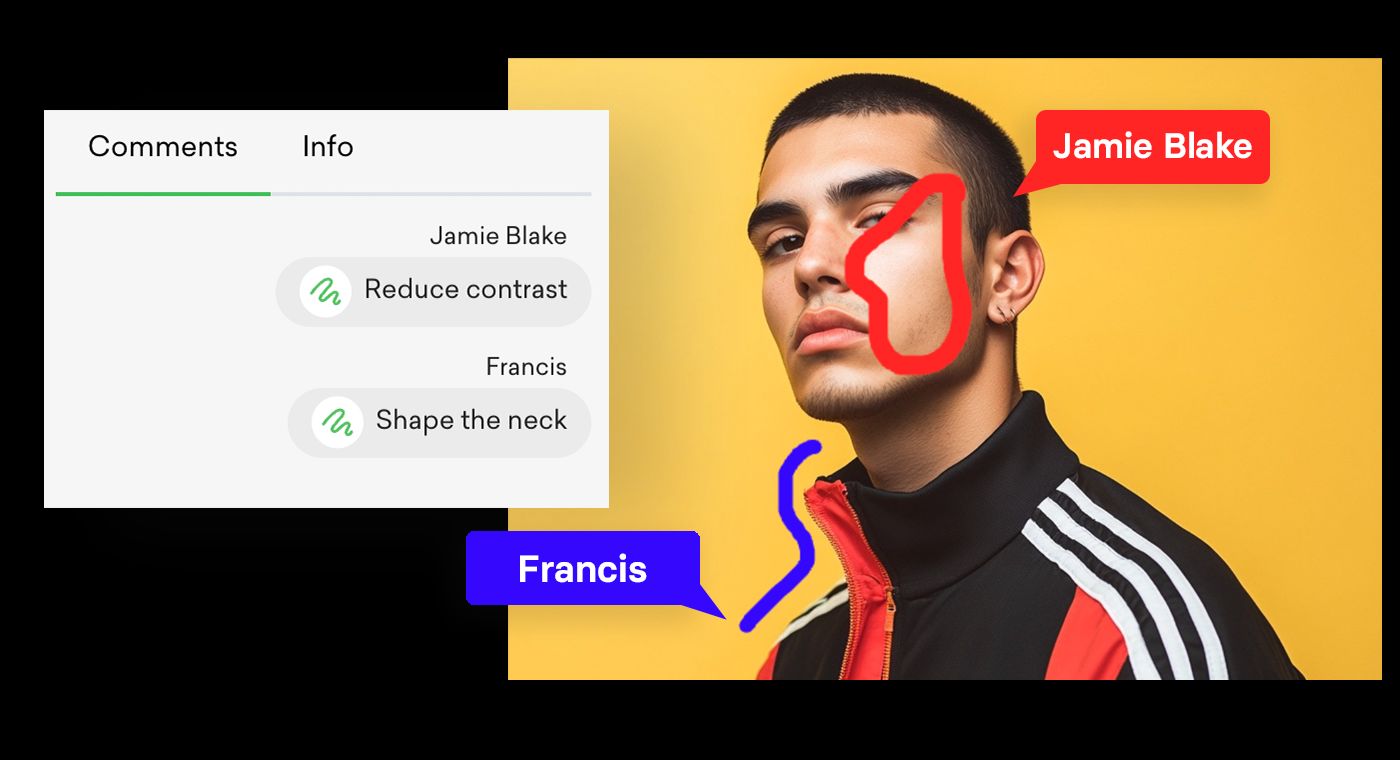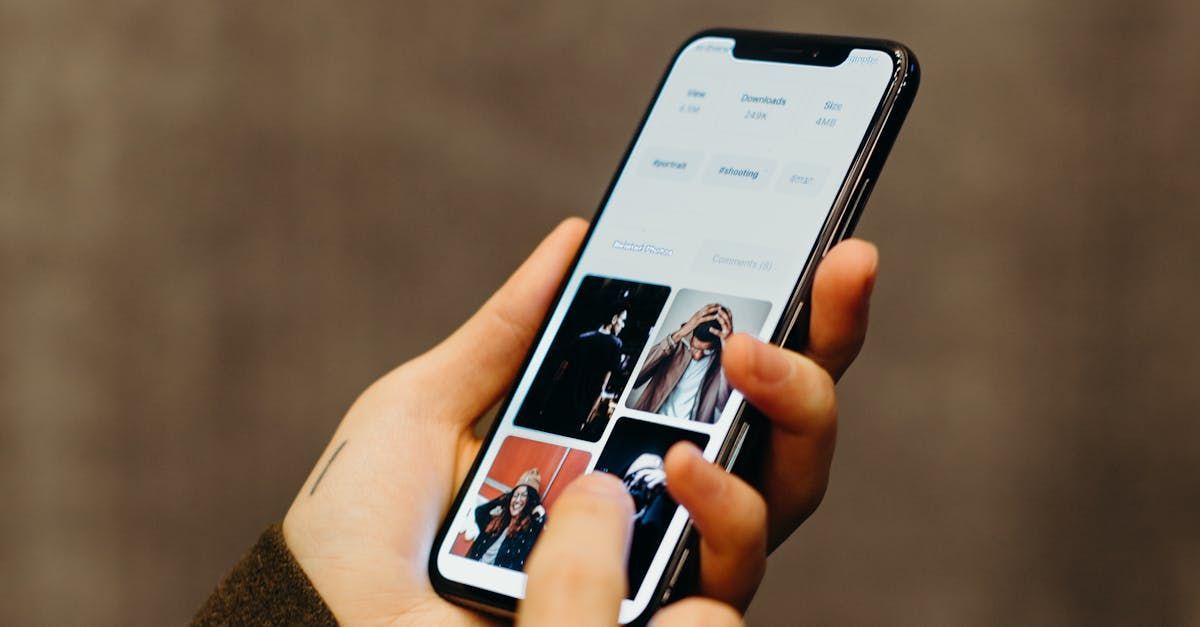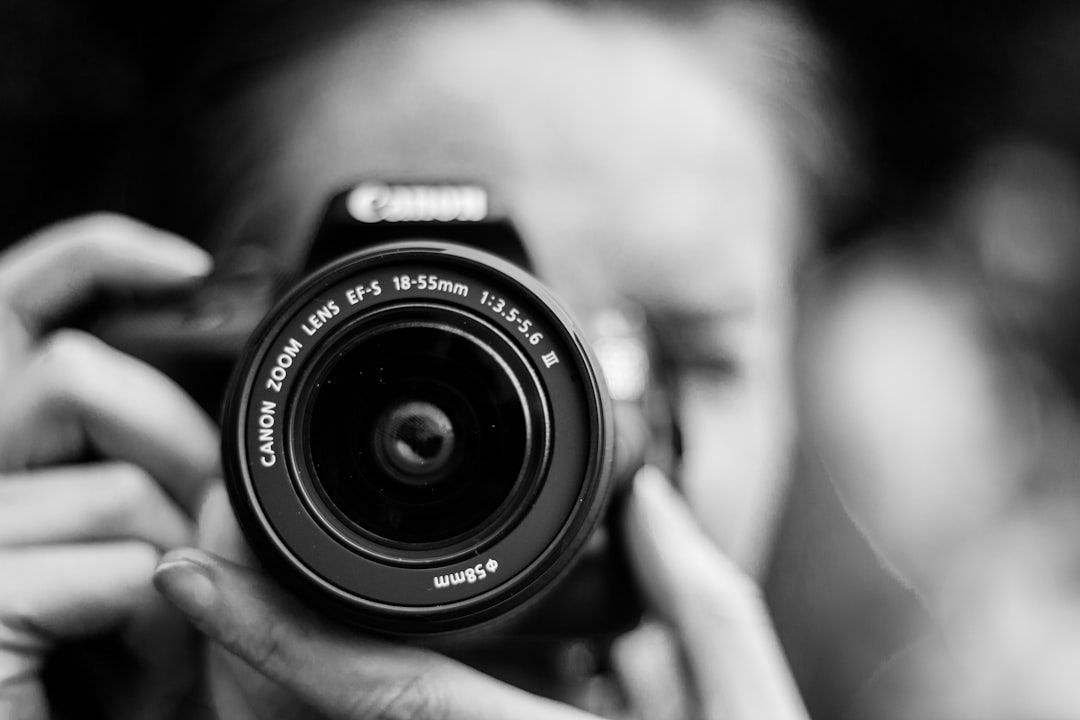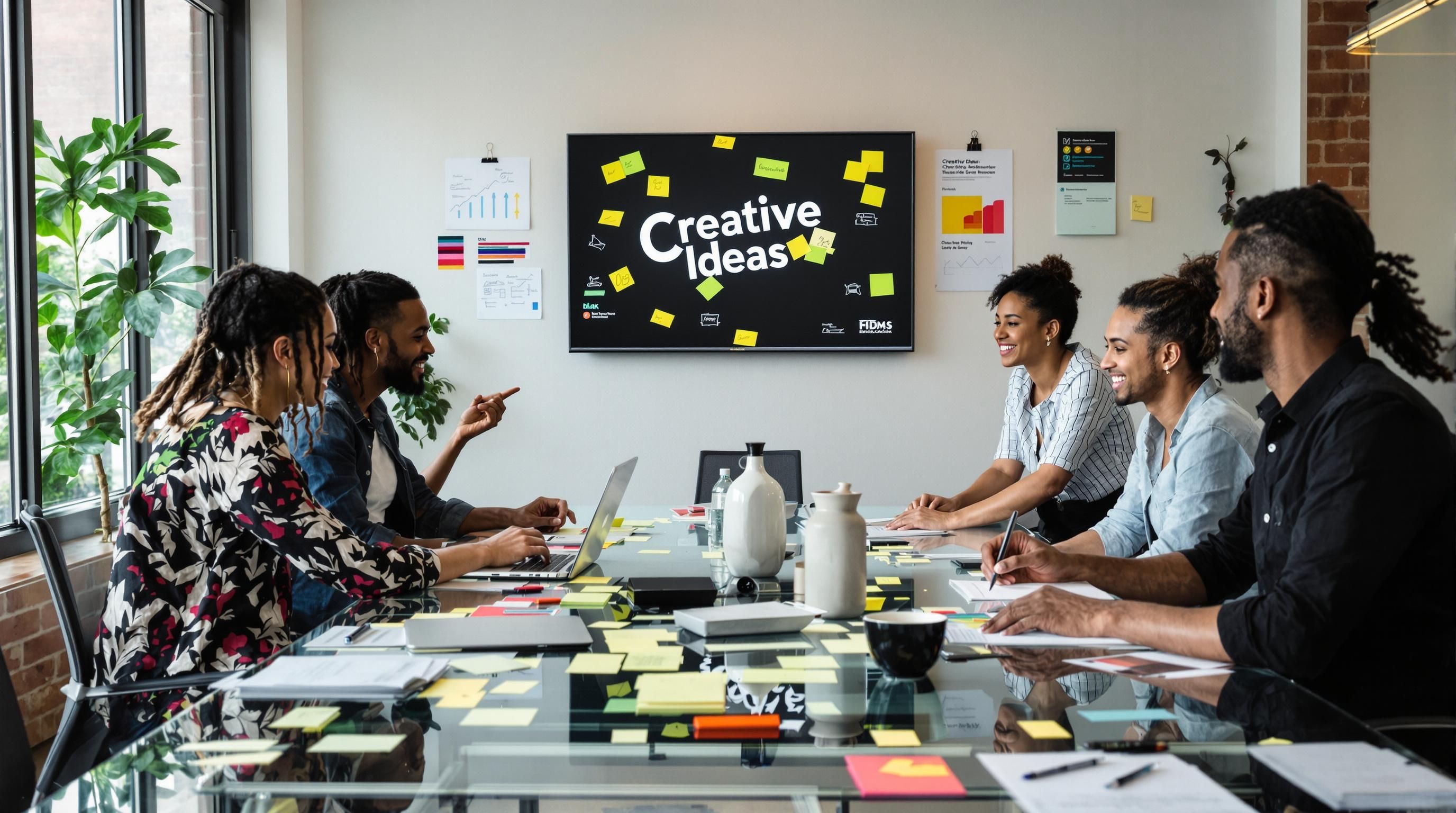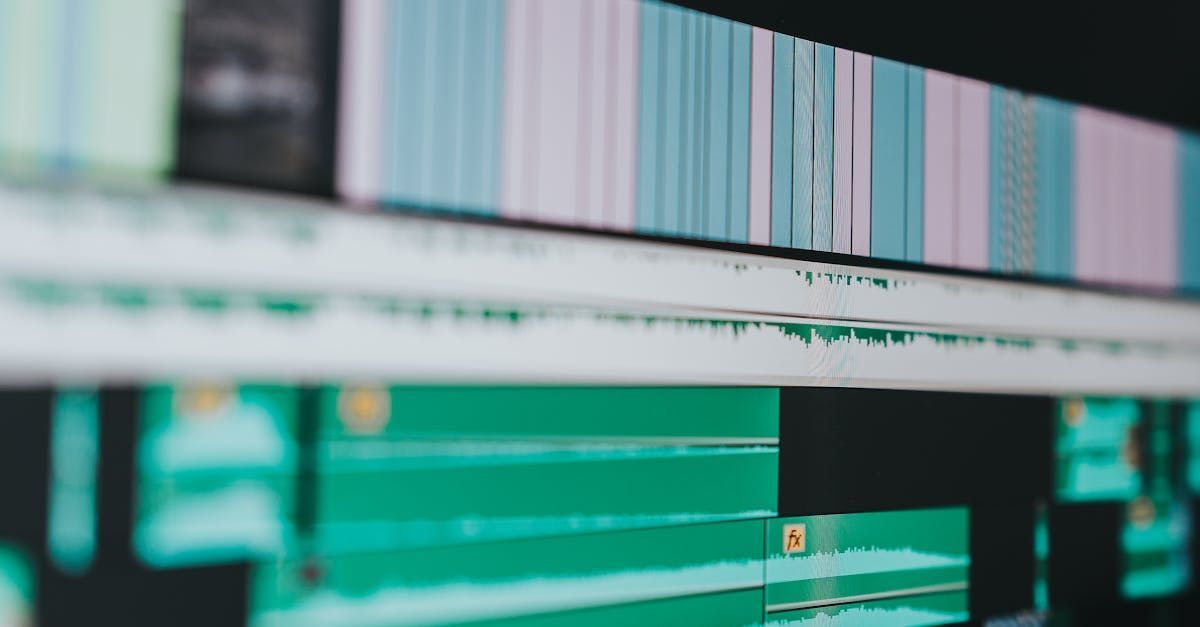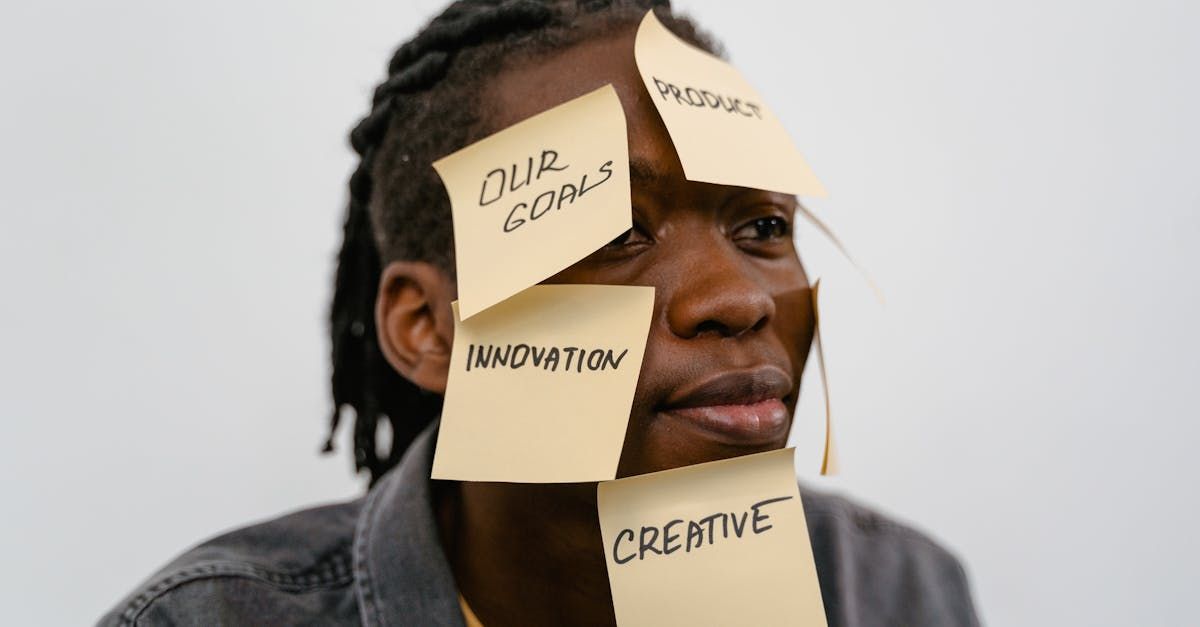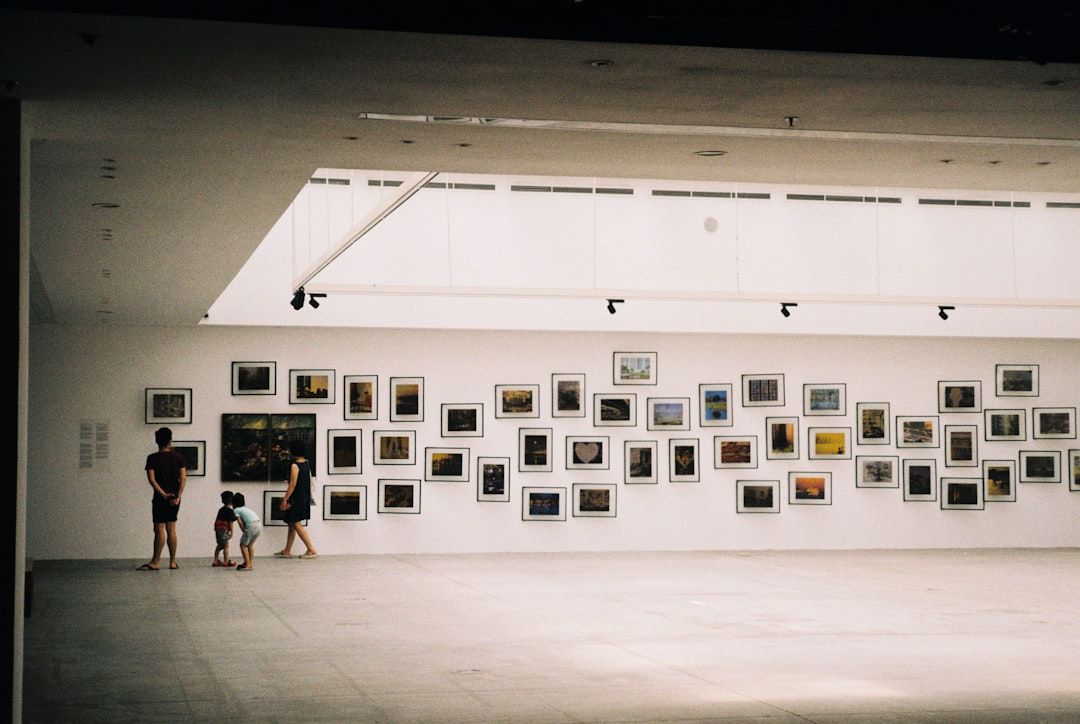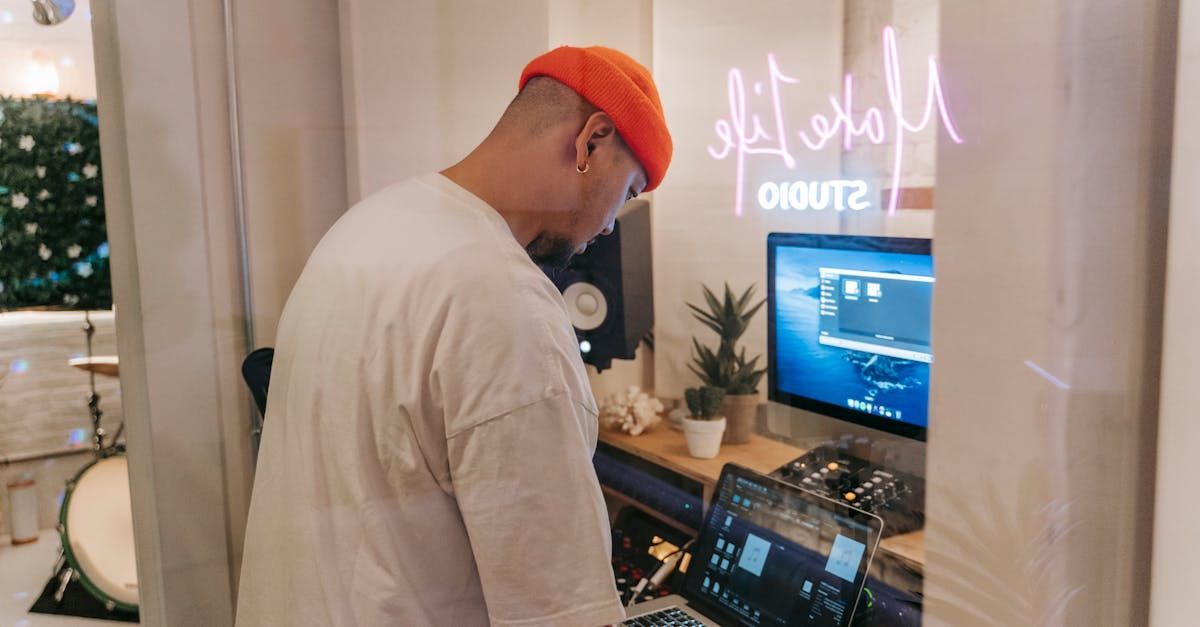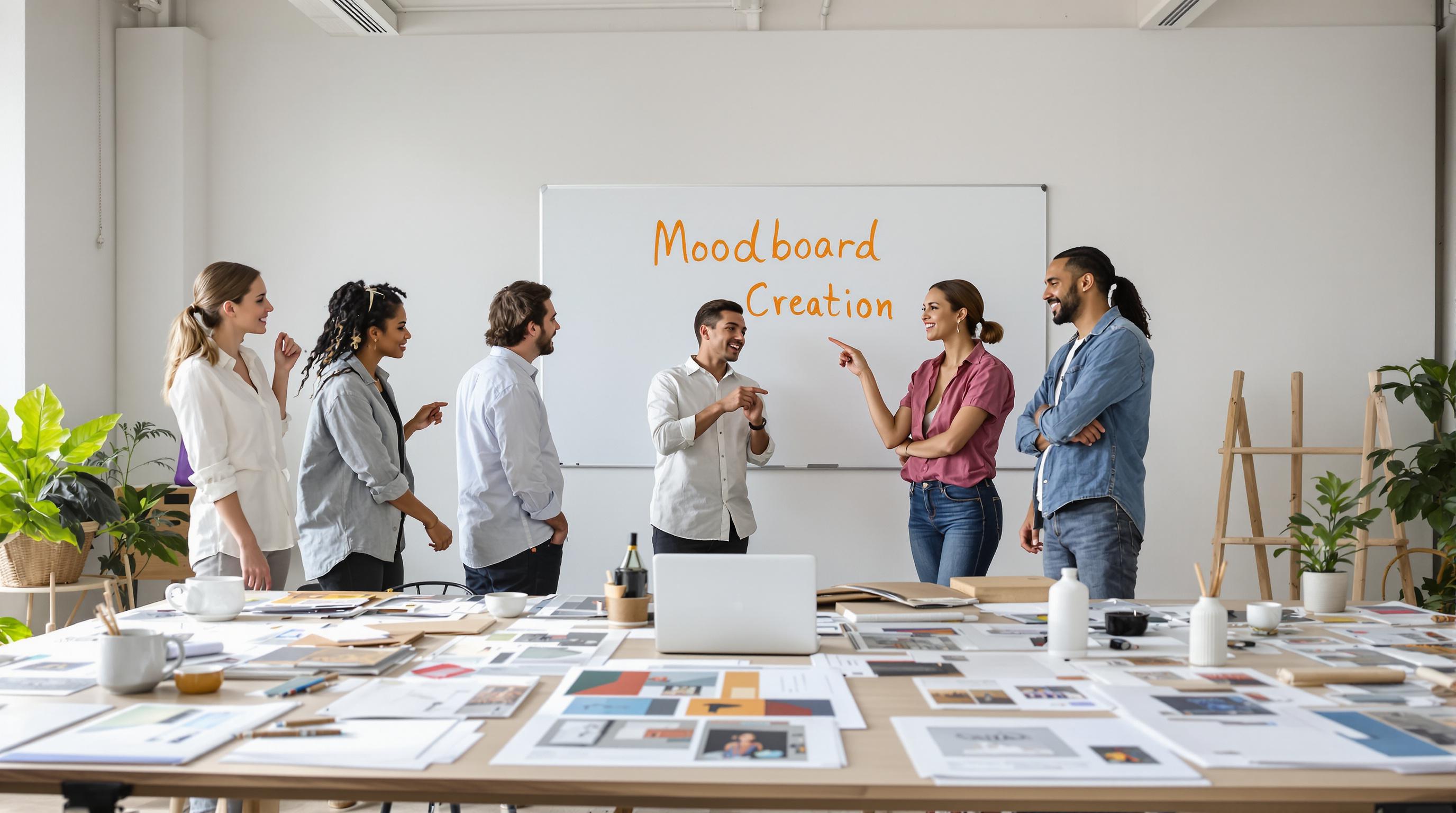Every creative project sparks to life because ideas move from your head to the page, but how do teams actually understand each other’s vision? Most people think sending messages or sharing proof sheets does the job, but that barely scratches the surface. Visual feedback tools have been shown to reduce misunderstandings by up to 62 percent compared to text-based communication. This is not just about looking at pretty pictures—it is about transforming vague ideas into crystal clear collaboration that actually speeds up, not slows down, the creative process.
Table of Contents
- Defining Visual Feedback In Creative Industries
- How Visual Feedback Enhances Team Collaboration
- Best Practices For Using Visual Feedback Tools
- Real-World Visual Feedback Examples For Creatives
Quick Summary
| Takeaway | Explanation |
|---|---|
| Visual feedback fosters clearer communication. | By providing immediate visuals, teams can express ideas and suggestions without language barriers. |
| Real-time tools enhance team efficiency. | Using visual feedback tools, teams can instantly review and act on changes, decreasing project revision cycles. |
| Collaborative feedback strengthens collective creativity. | Engaging in visual feedback creates a shared ownership environment, making critiques more positive and productive. |
| Clear visual annotations boost understanding. | Effective feedback is precise and contextual, which helps eliminate confusion in creative projects. |
| Innovative tech improves feedback experiences. | The use of advanced tools offers multisensory feedback, leading to richer and more intuitive communication in teams. |
Defining Visual Feedback in Creative Industries
Visual feedback represents a critical communication mechanism where creative professionals receive and provide visual insights about work in progress. This process transforms abstract concepts into tangible visual exchanges that drive project development and collaborative understanding.

The Conceptual Framework of Visual Feedback
At its core, visual feedback is a dynamic interaction where visual information serves as a communication tool. Research published in 2025 investigating visual peer feedback among students revealed that this process goes beyond simple commentary - it’s a nuanced exchange that enhances idea development and understanding of visual composition.
In creative industries, visual feedback operates through multiple channels. Designers, photographers, and artists use sketches, annotations, overlays, color markings, and digital comments to communicate precise suggestions. Unlike textual feedback, visual methods provide immediate, contextual insights that transcend language barriers.
Psychological and Creative Implications
A study examining the creative process discovered that visual feedback mechanisms like sketching enhance the experience of creative ‘flow’ - a deeply focused state of consciousness. This psychological dimension reveals visual feedback as more than a technical tool; it’s a cognitive bridge that helps professionals translate mental imagery into concrete creative expressions.
Professionals across visual disciplines leverage visual feedback to:
- Rapid Iteration: Quickly refine design concepts with targeted visual suggestions
- Collaborative Understanding: Create shared visual languages within creative teams
- Precise Communication: Eliminate ambiguity through direct visual annotations
Technological Evolution of Visual Feedback
An article discussing visual management in audiovisual projects emphasizes how modern visual feedback tools are transforming collaborative processes. Digital platforms now enable real-time visual commentary, allowing team members to interact with projects seamlessly across geographical boundaries.
These technological advancements have democratized creative feedback, making complex visual communication more accessible and efficient. Whether through overlay tools, digital annotation systems, or collaborative design platforms, visual feedback has become an indispensable component of modern creative workflows.
The evolution of visual feedback reflects a broader shift towards more intuitive, visual-first communication strategies in creative industries. By prioritizing visual clarity and immediate comprehension, professionals can accelerate project development and maintain the nuanced creative vision that distinguishes exceptional work.
How Visual Feedback Enhances Team Collaboration
Team collaboration in creative industries thrives on effective communication, and visual feedback has emerged as a powerful catalyst for transforming how professionals interact, share ideas, and develop projects collectively.
Breaking Down Communication Barriers
Visual feedback transcends traditional communication limitations by providing a universal language that speaks directly to creative professionals. A study from MIT’s Design Research Group revealed that teams using visual feedback mechanisms reduced misunderstandings by up to 62% compared to text-only communication methods. This dramatic reduction in miscommunication happens because visual annotations capture nuanced details that words often fail to convey.
Creative teams typically work across diverse backgrounds, skill levels, and sometimes geographical locations. Visual feedback becomes the bridge that connects these varied perspectives, allowing team members to point precisely where changes are needed, highlight specific design elements, and provide contextual suggestions that are immediately comprehensible.
Real-Time Collaborative Dynamics
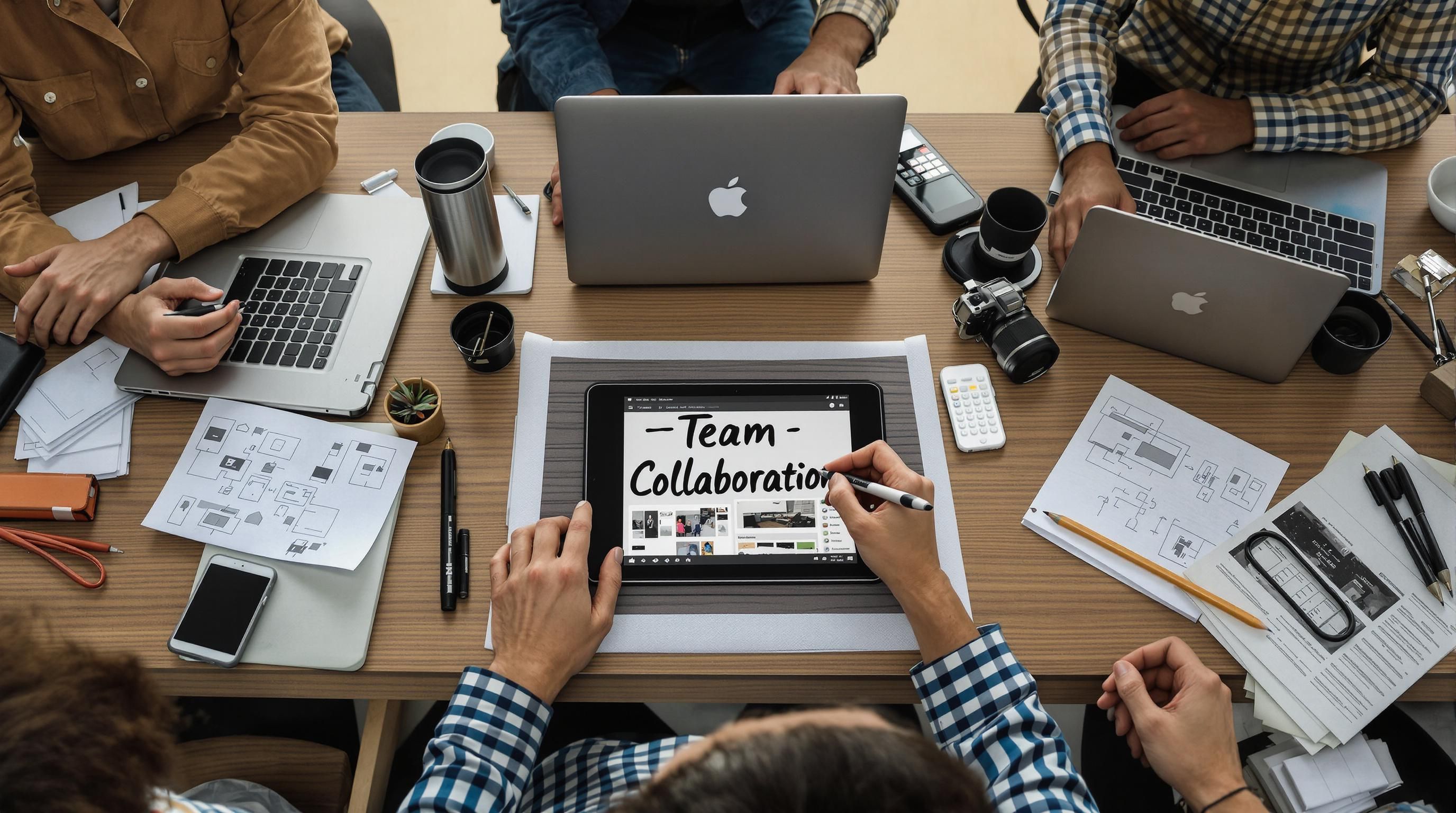
Modern visual feedback tools have revolutionized how teams interact during creative processes. Research from the International Design Collaboration Journal demonstrates that real-time visual commentary increases project efficiency by creating transparent, immediately actionable communication channels.
Key collaborative advantages include:
- Immediate Insight: Team members can provide instant visual reactions
- Transparent Workflow: Every modification and suggestion becomes visible and traceable
- Reduced Revision Cycles: Precise visual feedback minimizes misinterpretations
Psychological Dimensions of Collaborative Visual Communication
Beyond technical advantages, visual feedback profoundly impacts team psychology. When professionals can see and interact with feedback visually, it creates a sense of shared ownership and collective creativity. This approach transforms critique from a potentially confrontational process into a collaborative problem-solving experience.
Digital annotation tools now allow multiple team members to contribute simultaneously, creating a dynamic environment where ideas can be rapidly explored, challenged, and refined. The visual nature of this feedback ensures that each contribution is contextualized, making the collaborative process more engaging and productive.
The evolution of visual feedback represents more than a technological upgrade - it’s a fundamental shift in how creative teams conceptualize collaboration. By prioritizing visual communication, professionals can break down traditional barriers, accelerate project development, and create more cohesive, innovative outcomes.
As creative industries continue to globalize and become more interconnected, visual feedback stands as a critical tool for maintaining clear, efficient, and inspiring team dynamics. It transforms collaboration from a potential challenge into an opportunity for collective creativity and mutual understanding.
To help readers quickly understand how visual feedback compares to traditional (text-based) feedback in creative team settings, here’s a side-by-side comparison:
| Feature/Outcome | Visual Feedback | Text-Based Feedback |
|---|---|---|
| Misunderstanding Rate | Reduced by up to 62% | Higher risk |
| Expression of Nuanced Details | High (Annotations, overlays) | Limited |
| Speed of Feedback Cycle | Immediate/Real-time | Delayed |
| Engagement in Collaboration | Increased (shared visual context) | Lower |
| Accessibility Across Language Barriers | Highly accessible | Language dependent |
| Revision Requirement Frequency | Fewer cycles (less ambiguity) | More revision cycles |
Best Practices for Using Visual Feedback Tools
Visual feedback tools have transformed how creative professionals communicate and refine their work. Implementing these tools effectively requires strategic approaches that maximize collaboration and minimize potential misunderstandings.
Designing Clear and Constructive Visual Feedback
The University of Maryland’s Faculty Center for Teaching and Learning highlights critical elements for effective visual feedback. Professionals must prioritize visual clarity, maintain a personalized tone, and demonstrate specific suggestions through modeling techniques.
Successful visual feedback involves more than simply marking areas for change. It requires a holistic approach that provides context, explains reasoning, and offers actionable insights. Creative teams should focus on:
- Precision: Use specific visual markers and annotations
- Context: Explain the rationale behind suggested modifications
- Constructive Tone: Frame feedback as collaborative improvement
Technical Strategies for Effective Visual Communication
Columbia University’s Center for Teaching and Learning recommends leveraging screen capture and video walkthrough technologies to humanize feedback. These tools simulate one-on-one meetings, allowing for nuanced communication that goes beyond static annotations.
Professionals can enhance their visual feedback by:
- Recording narrated screen captures explaining design choices
- Using interactive annotation tools that allow real-time modifications
- Creating visual comparison overlays to highlight specific changes
Workflow Integration and Best Practices
Successful visual feedback requires thoughtful integration into existing creative workflows. Teams should establish clear protocols for how and when visual feedback will be used. This might include designated review periods, standardized annotation methods, and agreed-upon response timelines.
Key workflow considerations include:
- Establishing a consistent visual feedback schedule
- Creating team-wide guidelines for annotation and commentary
- Selecting tools that integrate seamlessly with existing design platforms
The most effective visual feedback transcends technical capabilities. It creates a collaborative environment where critique becomes a constructive dialogue. By approaching visual feedback as a communication art form, creative professionals can transform potential friction points into opportunities for collective improvement.
As visual communication tools continue to evolve, the ability to provide clear, empathetic, and precise visual feedback will become an increasingly crucial skill. Professionals who master these techniques will not only improve their immediate project outcomes but also foster a culture of continuous creative growth and mutual understanding.
Real-World Visual Feedback Examples for Creatives
Visual feedback transforms creative processes across various disciplines, providing innovative ways for professionals to refine their work, collaborate effectively, and push creative boundaries.
Performance and Skill Refinement Technologies
Research exploring augmented reality visualization demonstrates how immediate visual feedback can dramatically improve performance. In sports training, athletes receive real-time visual guidance that helps them understand and correct their techniques instantly. This principle extends beyond athletics into creative domains where precision and technique are paramount.
Creative professionals can leverage similar technologies to:
- Analyze Micro-Movements: Track subtle changes in design or performance
- Provide Instant Corrections: Highlight areas needing immediate adjustment
- Create Comparative Visualizations: Show before-and-after progressions
Digital Collaboration and Work-in-Progress Sharing
A groundbreaking study on online creative communities revealed how digital platforms enable artists to share work-in-progress snapshots. This approach reduces creative anxiety and fosters a collaborative environment where feedback becomes a constructive dialogue rather than a judgmental process.
Modern visual feedback platforms allow creatives to:
- Annotate Directly on Projects: Mark specific areas for improvement
- Create Version Histories: Track creative evolution
- Generate Contextual Comments: Provide precise, visual suggestions
Innovative Feedback Technologies
Researchers developing augmented interaction tools have created technologies that provide multisensory feedback. These innovations go beyond visual cues, incorporating tactile and auditory elements to create more immersive feedback experiences.
Emergent technologies are transforming how creatives receive and implement feedback by:
- Simulating physical interactions in digital environments
- Providing contextual, multi-sensory guidance
- Creating more intuitive communication channels
To clarify the distinctions and benefits between three real-world approaches enabled by visual feedback in creative work, here is a summary table:
| Approach | Key Features | Primary Benefits |
|---|---|---|
| Performance & Skill Refinement | Immediate, real-time visual guidance (e.g., AR) | Fast correction, enhanced precision |
| Digital Collaboration & WIP Sharing | Annotations, version history, contextual comments | Reduced anxiety, tracked evolution |
| Innovative Multisensory Feedback Tech | Tactile/auditory cues with visual channels | Greater immersion, intuitive input |
The future of visual feedback lies in its ability to bridge communication gaps, providing nuanced, immediate, and actionable insights. By embracing these technologies, creative professionals can accelerate their learning, improve collaboration, and push the boundaries of their respective crafts.
As visual feedback tools continue to evolve, they will become increasingly sophisticated, offering more precise, personalized, and context-aware guidance. The creative professionals who master these tools will gain a significant competitive advantage, transforming feedback from a potential point of friction into a powerful catalyst for innovation and growth.
Frequently Asked Questions
What is visual feedback in creative industries?
Visual feedback is a critical communication mechanism where creative professionals provide and receive visual insights about work in progress. It transforms abstract ideas into clear visual exchanges that enhance collaboration and project development.
How does visual feedback enhance team collaboration?
Visual feedback improves team collaboration by breaking down communication barriers, providing a universal visual language that helps avoid misunderstandings. It facilitates real-time interactions, making suggestions more actionable and reducing revision cycles.
What are best practices for using visual feedback tools?
Best practices include designing clear and constructive feedback, using precise visual markers, providing context for suggestions, maintaining a collaborative tone, and integrating visual feedback into existing workflows for consistency.
What technologies support visual feedback?
Modern visual feedback technologies include digital annotation tools, collaborative design platforms, augmented reality applications, and multisensory feedback systems that enhance communication by providing immediate and contextual visual input.
Ready to Eliminate Creative Miscommunication? Experience Visual Feedback Redefined with Pikd
Every creative knows the frustration of unclear feedback and project delays. The article highlights how misunderstandings can slow down collaboration and drain your team’s energy. You deserve a space where annotations, comments, and approvals are simple and visually intuitive – exactly what the new era of visual feedback demands.

See how Pikd helps you put these best practices into action. You can upload high-res images or videos, organize them into branded galleries, and instantly invite clients or collaborators to review and comment. Real-time visual feedback, customizable permissions, and seamless export options mean you spend less time fixing confusion and more time creating. Join now at Pikd and transform your creative workflow. Your next project deserves nothing less than clarity and speed.
